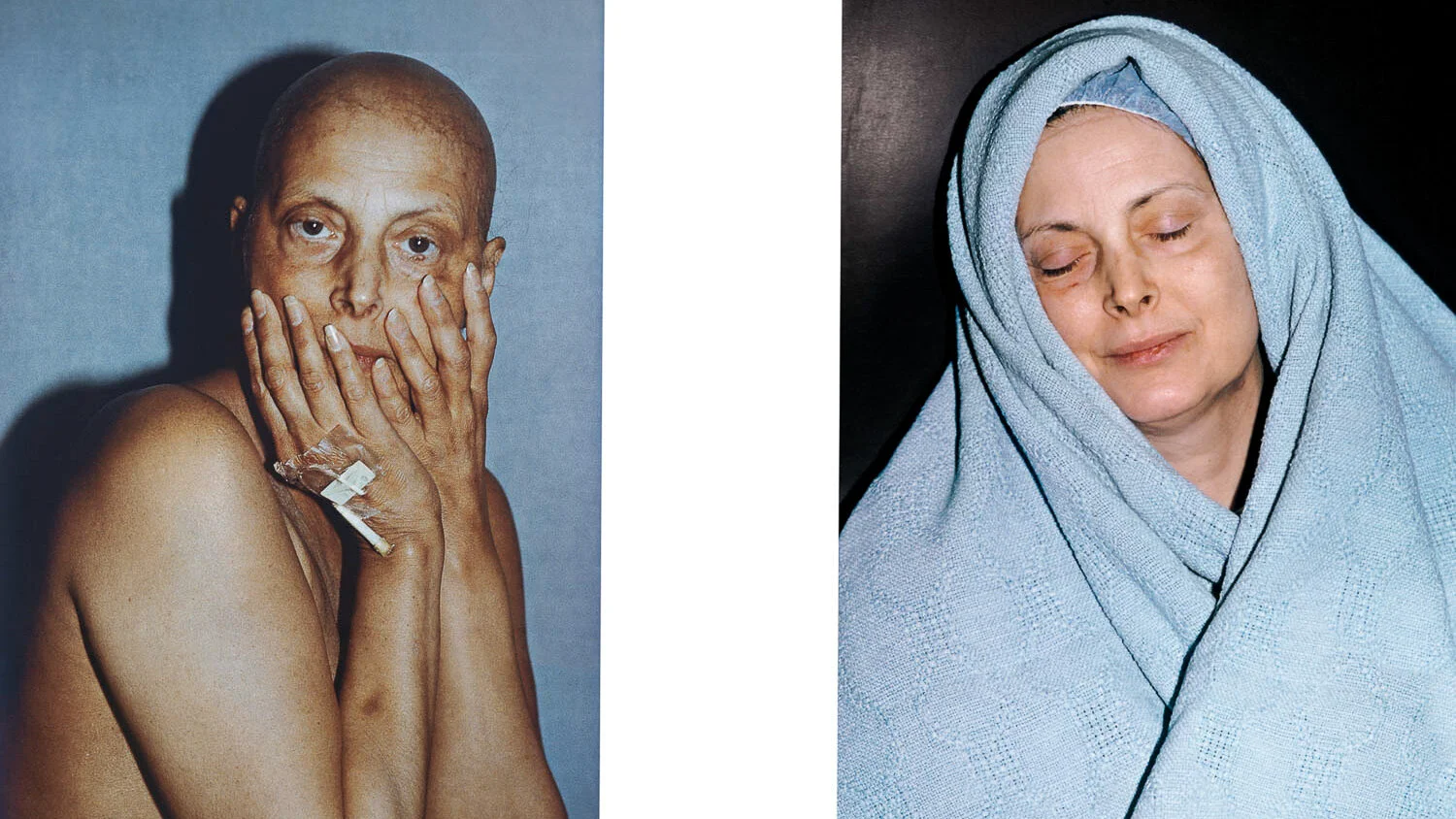HANNAH WILKE
An early practitioner of Body Art, and a leader in the Feminist Art movement who also worked with sculpture, photography, and video, Hannah Wilke became known for her provocative performances in which she effectively acted as an art world glamor model in the artworld, but with a twist: in posing before the camera and taking stylized pin-up images herself that she referred to as “body sculptures,” Wilke took the means of production for images of the female body from the hands of males and into her own. This act of reclaiming femininity and sexuality from the male gaze which dominates the canon of art history became a signature of her practice. However, she was on occassion accused of narcissism by some critics who described her as ‘dangerously beautiful’ and saw an ambiguity, if not a contradiction, between her artistic practice and her feminist alignments. S.O.S. Starification Object Series is one of her most famous bodies of work, in which she would take nude self-portraits of her body covered with small vagina-shaped pieces of chewing gum. Among these 50 or so black and white photographs are her well known posters such as the poster Marxism and Art: Beware of Fascist Feminism, which was created in response to the Center for Feminist Art Historical Studies’ 1975 invitation to submit an artwork to the projecct What is Feminist Art? This work was subsequently included in an exhibition of the same name at the Women’s Building, Los Angeles in 1977.
Prior to her death in 1993 from Lymphoma, Wilke began to create her work Intra-Venus from 1992-93 following her diagnosis. As a reaction against what she considered to be the culturally implemented “personal shame” of death, she documented her deterioration resulting from both chemotherapy treatment and the disease. Having also documented her mother’s struggle with breast cancer during the 1970’s with the series “So Help Me Hanna,” she was not unaccustomed to art projects involving these kinds of traumas. Wilke is remembered equally for her impassioned youth and her untimely death-as-artistic-document. Her life and work have been the subject of extensive scholarship in articles, essays, and books. Monographs dedicated to her contributions to the history of contemporary art include Hannah Wilke, Nancy Princenthal, (Prestel, 2010); Hannah Wilke: Making Myself into a Monument, in Gestures, written and edited by Tracy Fitzpatrick, (Neuberger Museum of Art, 2010); and Hannah Wilke, A Retrospective, text by Joanna Frueh, (University of Missouri Press, 1989). She was twice the recipient of a grant from the Pollock Krasner Foundation, received a grant from the NEA on four occasions, and was awarded a Guggenheim Fellowship in 1982. Wilke’s family and her sister Marsie Scharlatt founded The Hannah Wilke Collection and Archive, Los Angeles in 1999, and her work is represented in the public collections of major museums throughout the world.

